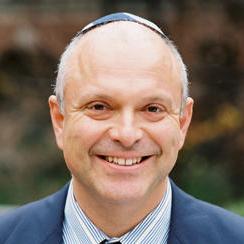
Kedushah in the Choir
May 13, 2016 By Nancy Abramson | Commentary | Kedoshim
This week’s parashah opens with a statement on holiness: “You shall be holy, for I, the Lord your God, am holy” (Lev. 19:2). In the original Hebrew, the word “you” in this verse is in the plural form, implying that anyone can attain holiness the capacity for holiness is not only for those who are spiritually gifted. The plural “you” might also suggest that holiness is best achieved in the context of a community, rather than as a solo effort.
Read More
Songs of Joy, Counterpoints of Tragedy
May 6, 2016 By Jonathan Lipnick | Commentary | Aharei Mot
Perhaps the Torah speaks now, in the spring of atonement, because we know so well our songs of joy carry with them counterpoints of tragedy.
Why should we be reading about Yom Kippur around the time Pesah is celebrated? These two holidays seem so different, and yet, in her poem “Aharei Mot,” Ruth Brin was on to something, leading me to wonder: How was I to understand the interrelationship between Yom Kippur and Pesah? How was I to take Ruth Brin’s instructive words to heart?
Read More
Prophetess, Leader, Musician
Apr 29, 2016 By Matthew Berkowitz | Commentary | Pesah
Joy is the theme of the hour as God’s praises are sung during the completion of Hallel. The image that bursts forth in our mind’s eye is that of Miriam the Prophetess and the women celebrating their newly found freedom on the banks of the Reed Sea. While the moment is solemn, it is also one of intense elation.

A Noble Freedom
Apr 22, 2016 By Tim Daniel Bernard | Commentary | Pesah
Many Virginians of middle and upper ranks aspired to behave like gentlemen. In the early seventeenth century an English gentleman was defined as one who could “live idly and without manual labor.” The words “gentleman” and “independent” were used synonymously, and “independence” in this context meant freedom from the necessity of labor.
Read More—David Hackett Fischer, Albion’s Seed: Four British Folkways in America, 366

Inside Out
Apr 15, 2016 By Ally Sterling | Commentary | Metzora
This week’s parashah, Metzora, details the special procedures a kohen performs to purify the recovered metzora (a person suffering from some kind of skin condition), tzara’at in the home, and ritual impurity. Metzora is about the insides (childbirth and emissions) and outsides (skin afflictions) of the body. I created Inside Out as part of a series of biological drawings that explores the beauty and intricateness of the inner workings of the human body. When I made Inside Out, I wanted to explore the different functions and shapes of human anatomy and physiology, and also the way in which everything is connected.
Read More
The Call to Find a Mentor and to Mentor Others
Mar 11, 2016 By Mark Young | Commentary | Pekudei
In parashat Pekudei, the Israelites are on a journey to a new life, having escaped the Egyptians, experienced the revelation at Sinai, and completed the building of the Tabernacle. They are now in the wilderness, sometimes unclear about their direction, sometimes filled with fear, and in need of guidance. However, they had mentors to guide them. They had the cloud that indicated the Presence of God, and they had Moses on their side.
Read More
Keep Calm and Consult a Priest
Apr 8, 2016 By Hillel Gruenberg | Commentary | Tazria
Tazria begins with a discussion of the ritual purity of a woman following childbirth and goes on to relate the treatment of leprosy. Reflecting on this juxtaposition of topics, my thoughts turned to the Zika virus, which has garnered global attention because of evidence it may cause birth defects in the children of mothers infected while pregnant.
Read More
Easing the Transition From Shabbat
Apr 1, 2016 By Shira D. Epstein | Commentary | Shemini
The parashah delineates several distinctions between holy and unholy: what constitutes an acceptable sacrifice; which animals fall within the category of kosher; the actions that might transition a vessel, oven, or garment to the status of unclean.
At the end of Shabbat, we invoke these same words during havdalah, praising God “who makes a distinction between holy and profane.”
Read More


